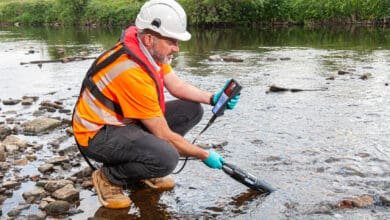Having a breakdown? Let’s talk about it

In an increasingly digital world and now with the potential impact of AI on all our futures continuing to grab global headlines, Steven Turner, European Head Of Production and Engineering at Radwell International, argues that, when production lines break down in the real world, talking to a human being can still offer the best solution.
With downtime now costing businesses more than a quarter of a million Euros per hour, on average, there is nothing more stressful for manufacturing and production managers than finding themselves in a breakdown situation.
Even with the best preventative maintenance systems in place, breakdowns still happen. And when they do, as the clock ticks away and the system stays eerily silent, the old adage ‘time is money’ is truer than at any time in history. Every minute counts to get the breakdown fixed, and the race is on to find the solution, which usually becomes an event in three stages.
Stage one involves identifying the problem. In many scenarios, the entire system can be held up by the breakdown of a single part. Once the production manager has worked out which one is to blame, the race moves to stage two: sourcing the required replacement part.
This stage can be simple if the production line is still supported by the OEM. But, if you’re one of the approximately 70% of companies worldwide using equipment with no OEM spares availability, it is in this second stage where the drama really begins.
One way to avoid stress at this stage is to have completed an obsolescence analysis and lifecycle report and to have identified the most likely source of problems in advance, and then to have ensured sufficient stock of the most appropriate replacement parts, or to have upgraded where necessary.
But otherwise, or in any scenario where you find you do not have the required part in stock, for most people, the next move is to search for the part number on the internet, using mainstream search engines like Google or specialist marketplace websites.
However, the problem with a purely digital approach is that the outcome is, by nature, binary. Either the part is available, and the world carries on as you move to stage three of fixing the problem. Or, it’s not, and your world stops.
But what if the options weren’t binary? What if there was another way?
In the age of the iPhone, the world seems to have become so used to being able to find the answer to almost any question from a little screen kept in a pocket, that putting the same device to an ear has started to feel almost like an action from a bygone era.
This is especially true with younger generations joining the workforce, with one further education college in the UK making headlines recently by launching classes to help students overcome their fear of actually talking on their phones.
But, even for highly experienced production managers, imagine there was no internet. In a breakdown situation, what would you do? In all likelihood, you would actually pick up the phone and call your trusted spare parts supplier to see if they have the part you need.
Unlike a search engine or any digital marketplace, the supplier might ask you some questions about the issue you are having. Can you describe the fault? What is the machine? What is the issue? What make and model of PLC or drive is showing the fault?
Suddenly, rather than searching for a single answer, you are having a conversation; not with a digital chatbot linked to common FAQs, but with a fellow engineer, whose job it is to keep factories up and running.
Having a conversation at the start means that, if the engineer needs to come to the site to look at the problem in person, they can come with the correct equipment, the correct manuals, the correct laptop if necessary, with the correct software and cables, perhaps a replacement unit if it is appropriate.
Spending five minutes on the phone getting accurate information to begin with could save hours of downtime through driving back and forth or unnecessary fault-finding.
The same attitude can be applied to purchasing spare parts as well as repairs. Imagine again that there is no internet, only human beings to talk to. Working together with a fellow expert, it is actually possible to discover that the solution to your problem is not the one you were thinking of.
Inverter faulty? We may not have the exact model number, but maybe we have a higher kW rating in the same frame size. PLC problem? Maybe we have the exact CPU, or maybe we have one with more memory. Maybe we have your exact HMI, but it is under a different part number simply because it has a different colour bezel or a plain membrane instead of a branded one.
A search engine would never know this, and would never suggest the alternative in the way an expert in spare parts can. And no matter how smart AI gets, it can only base what it knows on what it can find on the internet. The thing it will never have is real-world experience.
All of the examples above are drop-in solutions, not complicated retrofits. But knowing about them comes from experience, not data.
Rather than focusing on one solution, having a conversation opens up your options. It is easy to rely on the speed at which technology can give us a potential answer, but it doesn’t work if you’re asking the wrong questions. Having a conversation that starts with an open-ended question, with a real human being, can be the quickest, or even the only way, to solve a problem.
So, when you’re having a breakdown, try breaking the norm by picking up the phone and taking a few minutes to talk. It might be the answer to all your problems.








